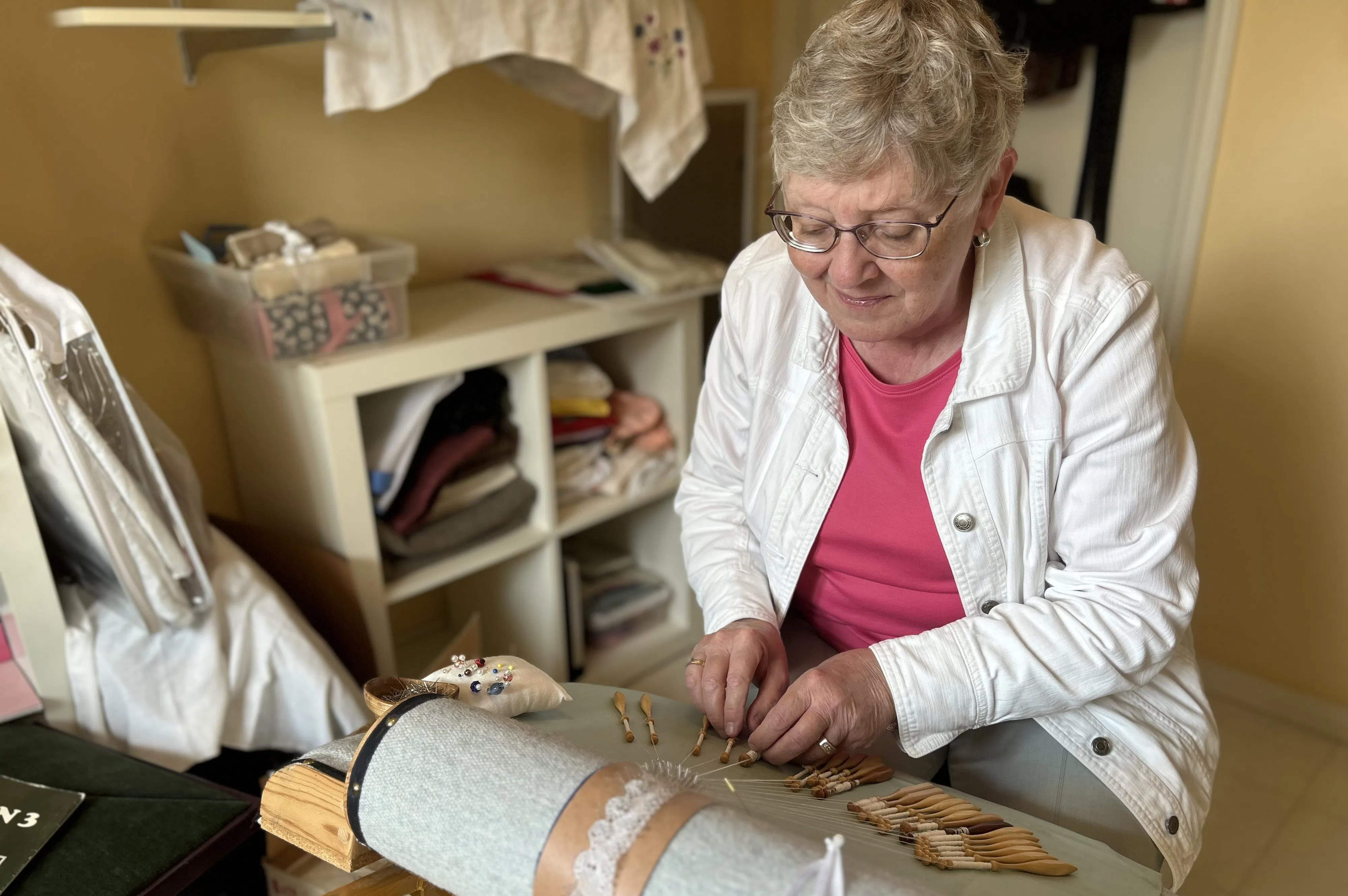When the average person sees a lace gown or tablecloth, they might marvel at its intricate patterns and delicate craftsmanship.
Saskatoon’s Ulla Nielsen approaches a piece of lace with a different perspective — she examines it closely, searching for imperfections.
“There are mistakes and unevenness in handmade lace,” she said in an interview with 650 CKOM.
Listen to Nielsen on Behind the Headlines:
“Every person who makes lace, their tension changes. They’ll skip a stitch here or there, or they’ll make a change in the pattern from one repeat to the next. Then you’ll know it’s the real thing.”
Nielsen is one of less than a dozen artisans in Saskatchewan preserving the delicate art of bobbin lace.
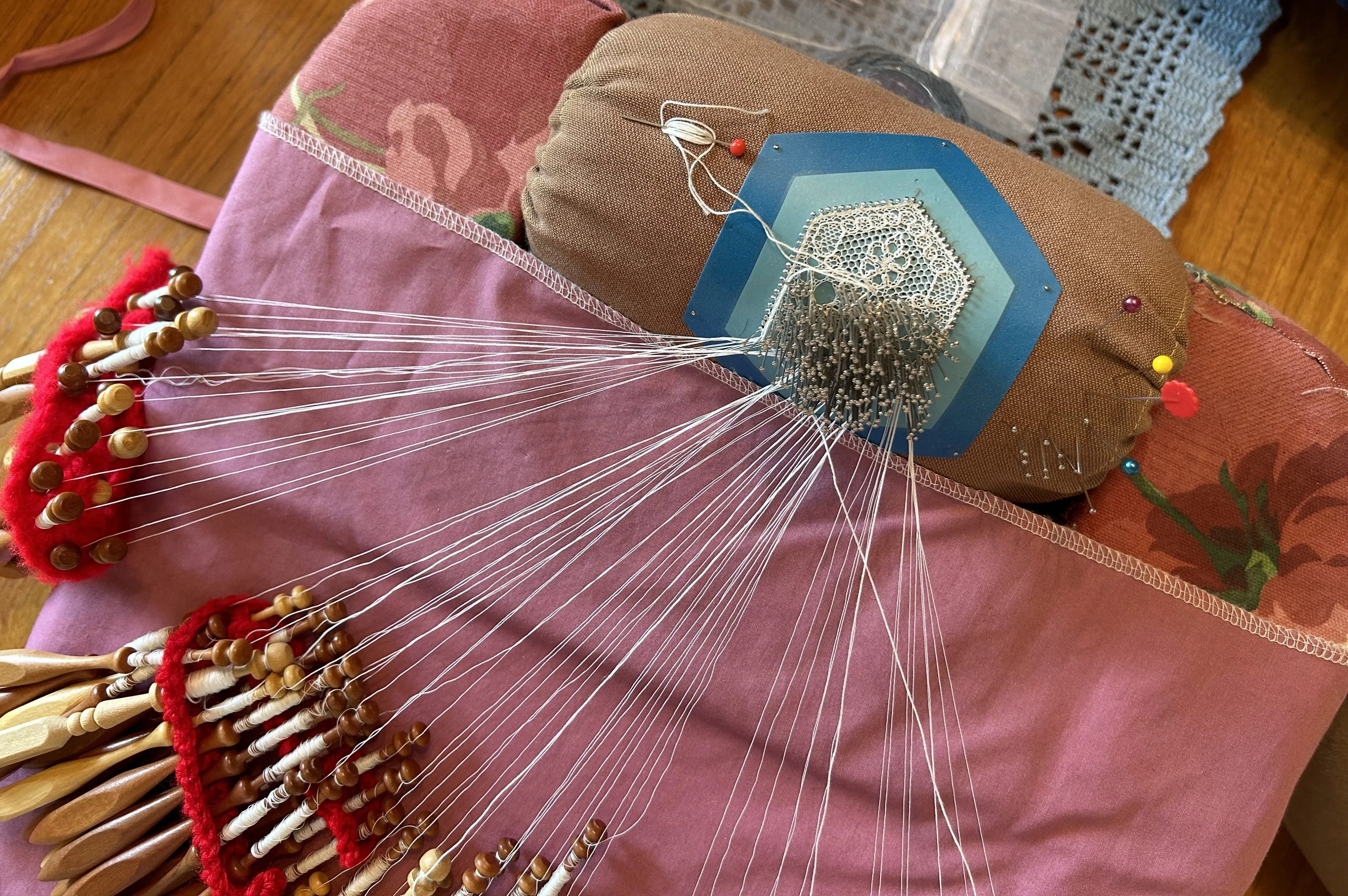
Bobbin lace is a technique that involves using bobbins to weave intricate patterns of lace. (Brittany Caffet/650 CKOM)
Nielsen’s interest in bobbin lace began in 1990 when her mother took a trip to Denmark.
“She brought me back a lace pillow, and that’s where it all started,” she said, glancing around her living room at the many pieces of handmade lace adorning chairs and tabletops.
She soon acquired her first set of bobbins. Not to be confused with a sewing machine bobbin, a lacemaking bobbin is a larger, often decorative spool or spindle used to hold and manage thread.
Once she had gathered the materials needed to learn the craft, she eagerly began her journey, only to face a significant challenge.
“At that time, there was no internet,” she recalled. “There wasn’t anybody here that I knew that made bobbin lace. So the first few years were tough, because the resources were so limited at that time.”
In her pursuit of knowledge about this ancient craft, Nielsen turned to books. As she learned about the techniques used to weave pieces of lace, she also educated herself on the history of lacemaking.
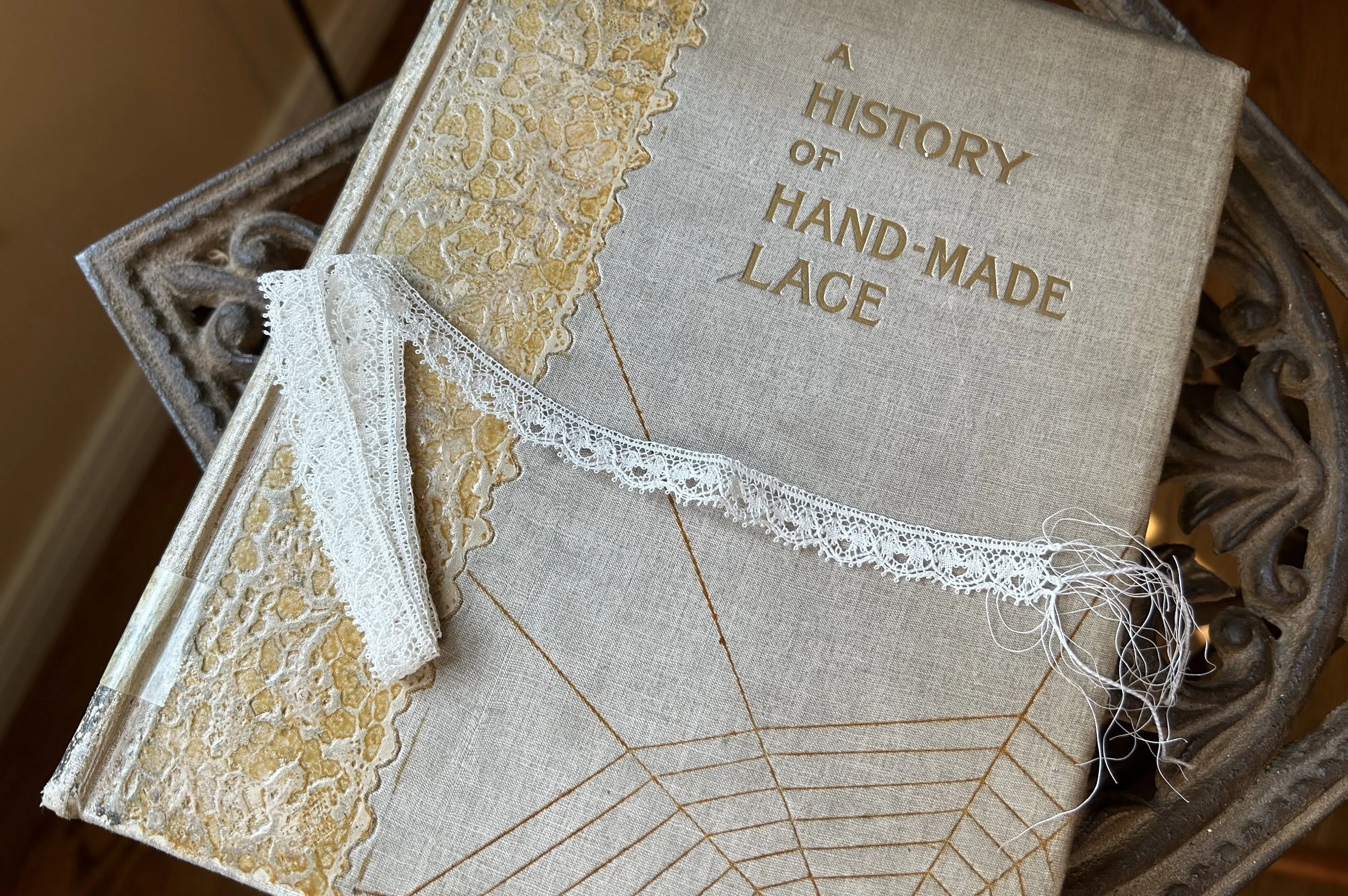
When Nielsen began making lace in 1990, there was no internet in Saskatchewan. She turned to books to learn about the techniques used to make lace. (Brittany Caffet/650 CKOM)
Nielsen says bobbin lace likely originated in Italy in the 16th Century.
“It started mainly in the church and in convents making clerical robes,” she said. Lace was also sold to members of the public, but only the very rich could afford the hefty price tag.
“Bobbin lace was worth more than it’s weight in gold — literally,” Nielsen said. “That’s how exclusive it was.”
As the centuries went by, the demand for lace grew. Schools were founded to teach children the art of lacemaking.
“They would teach the kids reading and writing, but they would also teach them lace making,” she said. “They had a skill that could be used to actually earn a living later on, especially for the girls.”
Nielsen said the Industrial Revolution made a profound impact on the art of lacemaking. Machines were developed that took mere minutes to create a piece of lace — a stark difference from the numerous hours required to weave just a few inches of handmade lace.
With the advent of the new technology, bobbin lace became a hobby rather than a way to earn an income.
While the introduction of lacemaking machines nearly led to the complete loss of the art form, Nielsen believes another form of technology could very well play a key role in its revival.
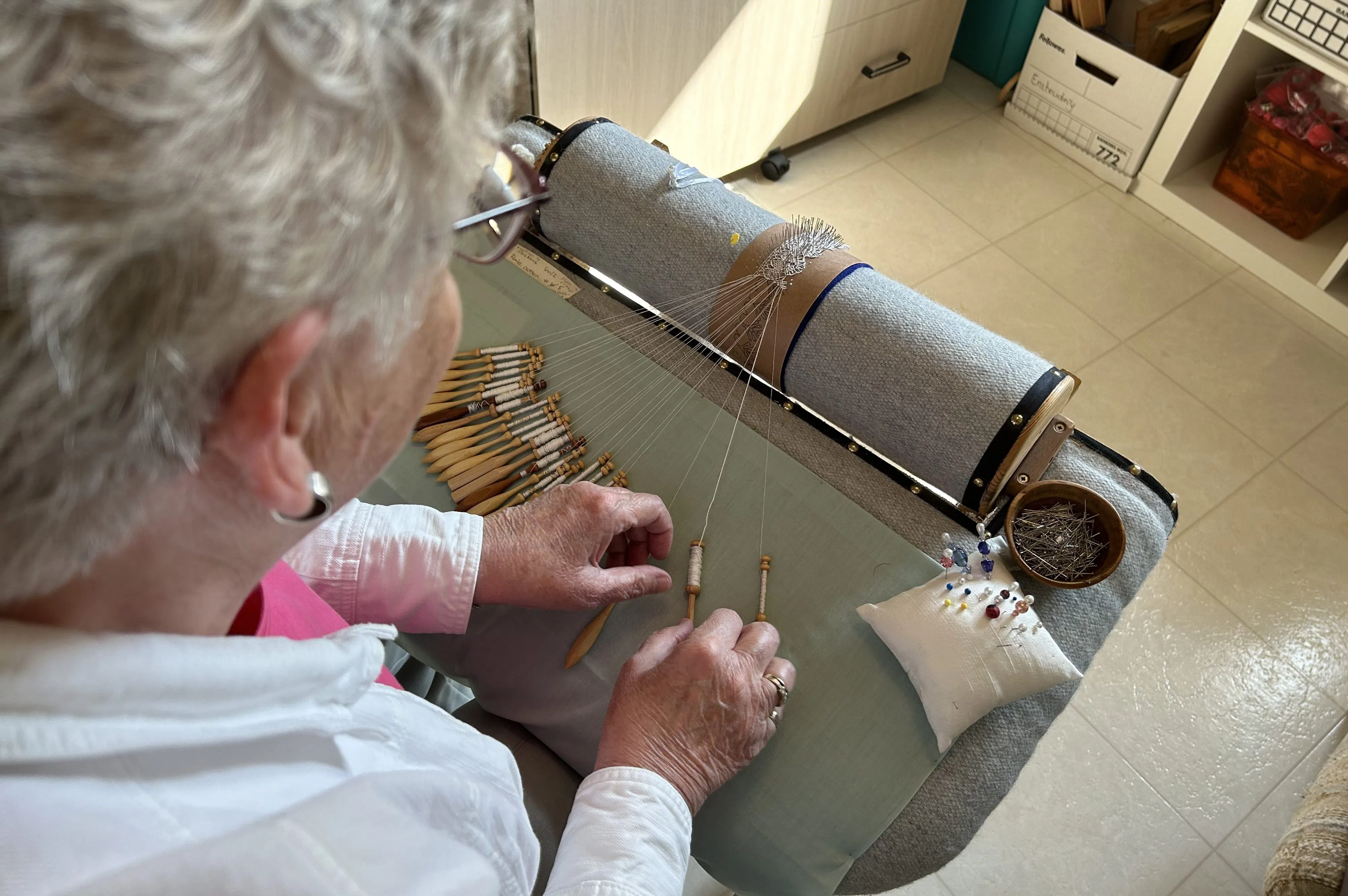
Ulla Nielsen’s interest in bobbin lace began when her mother brought this pillow home from a trip to Denmark in 1990. Nielsen has spent the last three decades learning the delicate art of lacemaking. (Brittany Caffet/650 CKOM)
Just three decades after Nielsen started making lace, the knowledge she once pored over books to find is readily available online.
“Now with the internet, with Youtube, the lessons that you can learn online… there is a lot of information out there. You just have to go looking for it,” she said.
Nielsen said watching videos online is now her preferred method for learning new techniques and patterns.
“If you’re working one-on-one with a teacher, you can say ‘Can you do that for me again?’ But if you are in a class with 10 people, that gets difficult,” she said.
“But on Youtube you can go ‘Oh, I want to see that again.’ And you see it again! And you can watch it five or six or a dozen times — as many as you need to learn.”
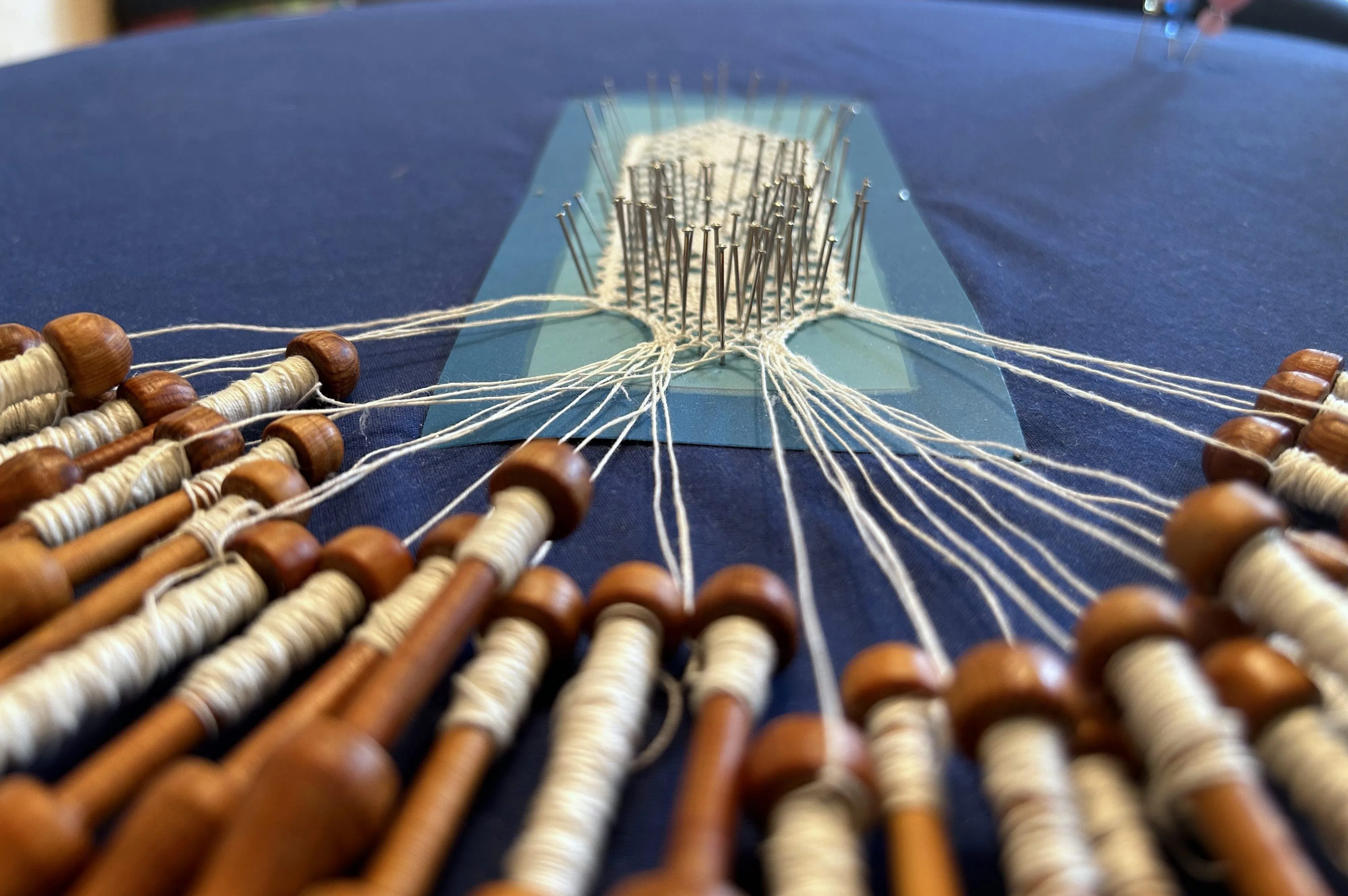
Nielsen said that while bobbin lace may look complicated, it is a fairly simple and inexpensive hobby to learn. (Brittany Caffet/650 CKOM)
Nielsen said bobbin lacemaking is an affordable pastime to learn.
“You’ll need a pillow — a base on which you put your pins and your pattern,” she explained, adding that she once took a class where participants made their own simple lacemaking pillows using styrofoam, felt and cotton.
“A firm base that you can stick pins into and they won’t move around… that’ll do you!” she said with a smile. “Then what you need are bobbins. Bobbins are really nothing more than sticks that have thread wound around them.”
While bobbin lacemaking may look complicated, Nielsen said it is easier than one might think.
“There’s only two stitches that lead to all the rest,” she said. “Sort of like knitting — you knit and you purl. Everything else is based on that. In bobbin lace you either cross two bobbins or twist two bobbins. And that’s where you start.”
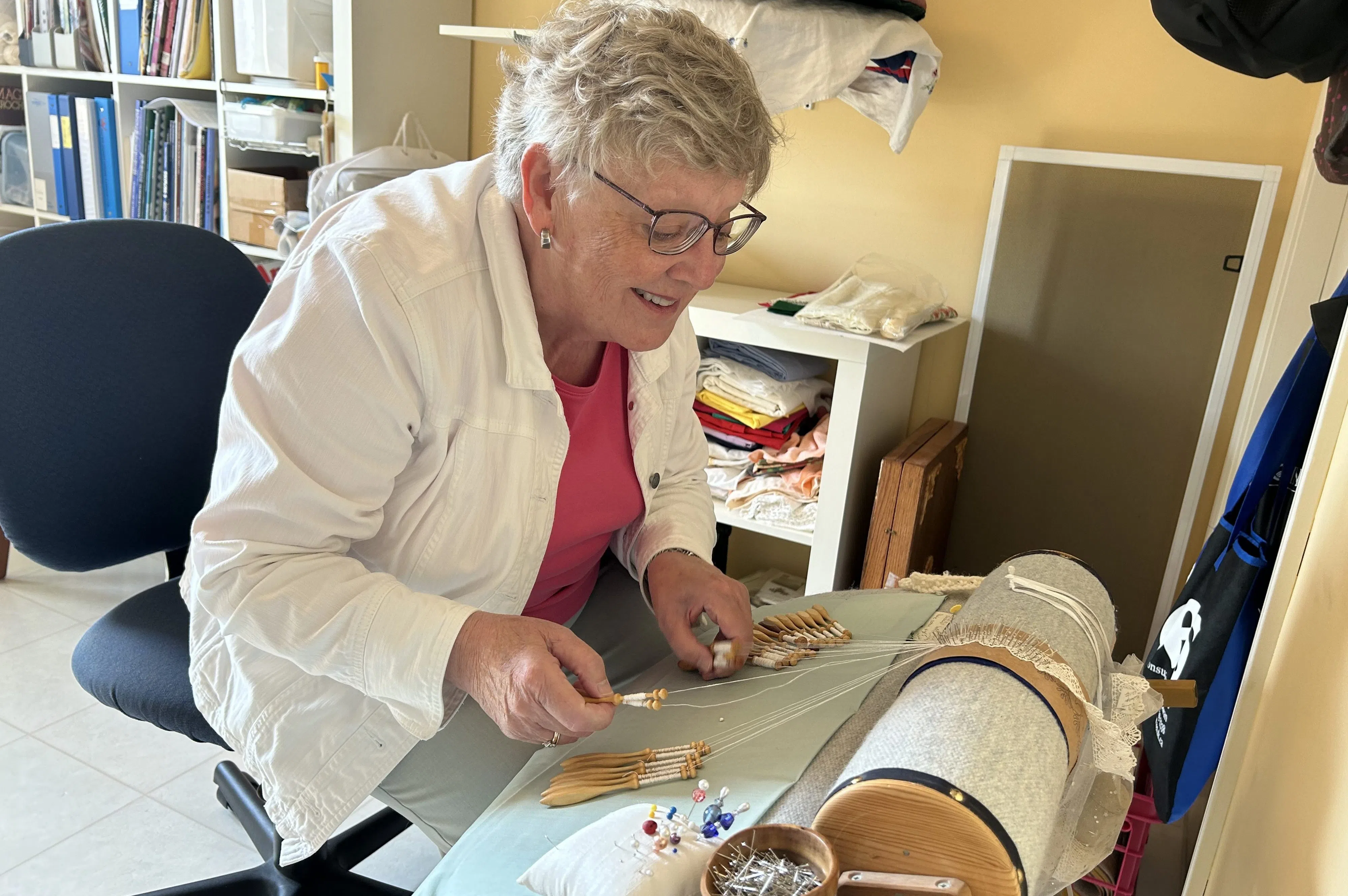
Although the number of lacemakers in Saskatchewan is dwindling, Nielsen said she is optimistic that the internet will help revive this dying art form. (Brittany Caffet/650 CKOM)
Nielsen said that while her dream is to create a wedding veil, she typically makes doilies and handkerchiefs reserved for special occasions.
“This day and age, there’s not a lot of places we use lace,” she said. “Lace is really special, and it’s not something you’re going to want to put in the washing machine and use regularly.”
According to the Canadian Lacemaker Gazette, there are only 11 lacemakers in Saskatchewan.
Even with the number of lace artists dwindling, Nielsen remains optimistic.
“I think there’s hope. That’s the most important thing,” she said.
“There are people that are playing with bobbin lace, playing with threads. If bobbin lace stays static — the way that it was always done — then it’s gone. I don’t think it’s going anywhere soon. but that doesn’t mean we can ignore it.”
Read more from Brittany Caffet
